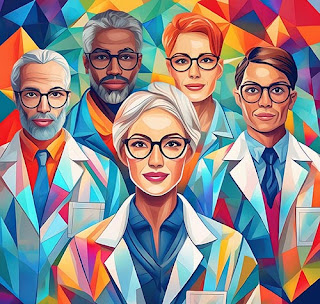Being creative assumes a substrate that never fails: a good spoon always stirs boiling pots. But what about when there is no spoon ?
When the medium of an artist's studio is a canvas and that canvas turns into a machine with a screen, when we dig a little deeper ( and in Computational Thinking in Science where Peter Dennign weaves together how if biology ultimately becomes an information science, and where computational Simulation always starts as something as simple as estimating how to catch a ball ) we see how our world views are radically changing. We see how in past computational thinking using machines with a screen in specific ways is where now entirely different thought processes and interactions with alternative computing models is allowing us to break free from step wise systems of envisioning, and, all in one shot.
When companies begin to ask ( and after having design thinking being embedded in all aspects of an organization ) how can non-typical computational thinking allows Designers to ignore the mapping of what needs to be physically made into the real machine ( at the physical hardware of whatever computing system XYZ level is in use at the moment ) and where an almost all of a sudden, radically new model of non-computational thinking emerges. The medium is the message / the message is the system and all ( almost ) cases we see this via data sets. Will this then allows us to be released from systems / the mentality of simulation first and yet this can be that even more doors are beginning to swing wide open in firms and organizations that are growing and evolving with this new capability: raw data ( in so many formats you can't even count them ) first. Design is becoming data. Any data. Raw repositories.
How many designers ( and separate from the engineering mentality ) then become almost intricately connected to the level of abstraction necessary for the computational tools that are used to create & think ? It is where design itself becomes part of a computational substrate and thus allows a user to directly effect creativity itself via environments or data that can be just loaded into an XYZ system that re-interprets at will. These new inflection points can be where breakthroughs begin to emerge in firms and organization structures and where unexpected efforts begin to grow at exponential rates in ways never expected of before.
Computational thinking then can be looked at not as a simulation job ( and which software engineers - those writing the substrate of the verbal and logical interfaces to the assembler of the microprocessor on which programs run ) but ultimately an exercise where computational systems no longer need to be thought of as linear canvases. We see this in the current capabilities of neuromorphic computing and even stable diffusion Ai systems where designing via completely new ways of thinking emerge quickly and where the output from that effort comes at incredible rates as well. In many cases these also do not requiring humans with their bare ( computer enhanced ) hands to re-invent via a one after another model.
Does this mean that there is an entirely new way of looking at creative computing itself and/or even a possible entire re-assessment of computational thinking / systems thinking as a way of working ? Is it then that within the context of being able to develop the mental skills that facilitate the design of automated process: now today referred to as creating " the algorithm " where we exactly see the possibility to unembed this aspect of the fabric of digging for novel capabilities and functionalities first and which many casually refer to as " innovation " and in some cases ' innovation science ' if such a thing can be said? We can then also see how computational capability and computational thinking can be ( at this moment in time with the machines that we have ) a fully integrated piece of an entire organizations ethos and why it's possible how specific R&D efforts lead the way in determining next generation products yet to be uncovered and where other methods produce radical departures from existing ways seeing and producing all together.
#iGNITIATE #Design #DesignThinking #DesignInnovation #IndustrialDesign #iGNITEconvergence #iGNITEprogram #DesignLeadership #LawrenceLivermoreNationalLabs #NSF #USNavy #EcoleDesPonts #Topiade #LouisVuitton #WorldRetailCongress #REUTPALA #WorldRetailCongress #OM #Fujitsu #Sharing #Swarovski #321-Contact #Bausch&Lomb #M.ONDE #SunStar










